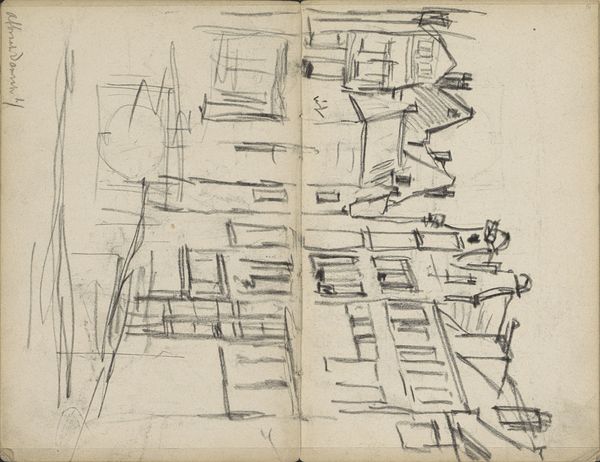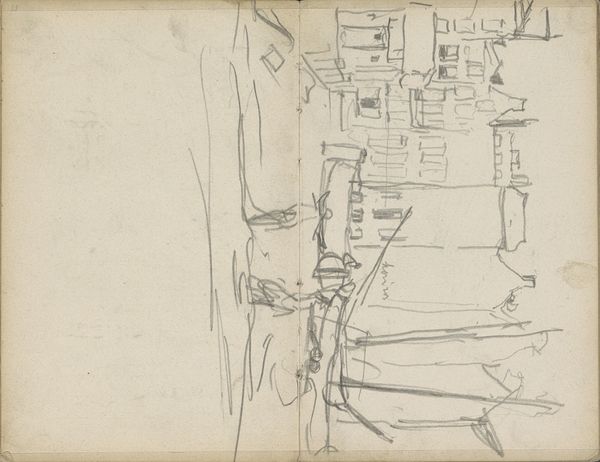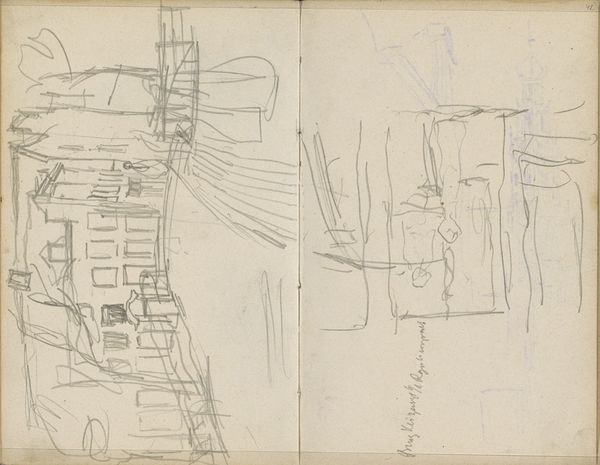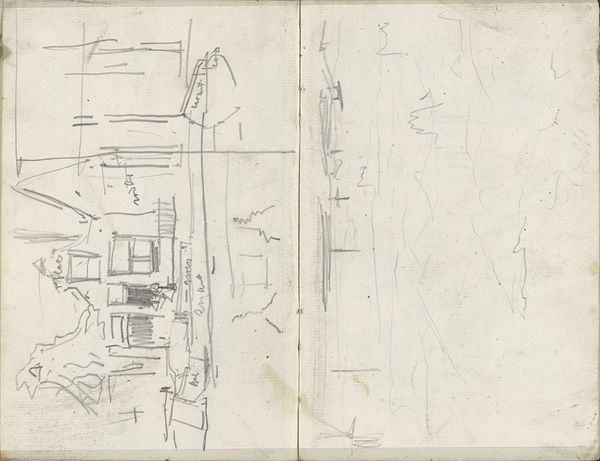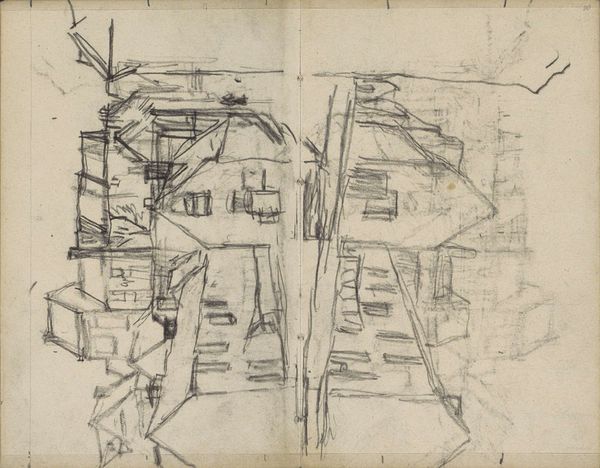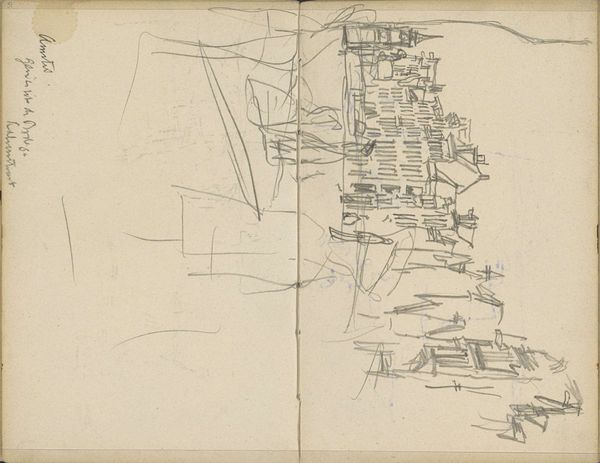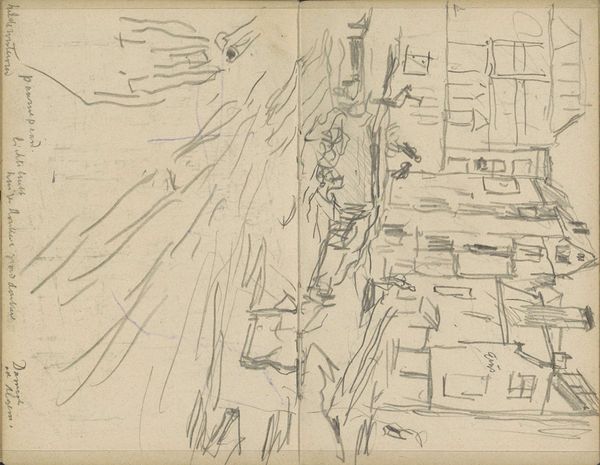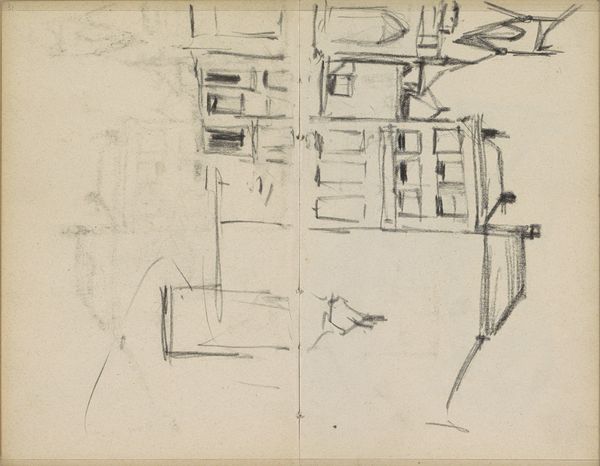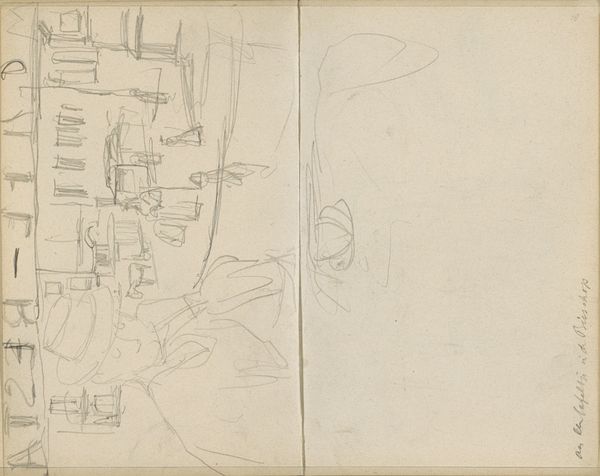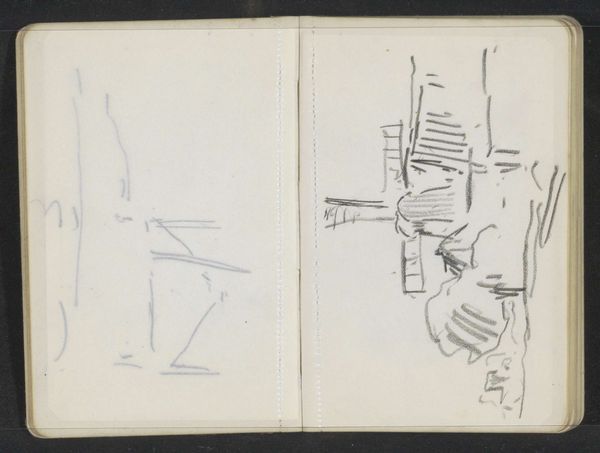
Copyright: Rijks Museum: Open Domain
Curator: Before us is George Hendrik Breitner's pencil drawing, "Gezicht op het Beurspleintje vanaf het Rokin," dating from around 1903. It captures a scene of the Beursplein square from the Rokin canal in Amsterdam. Editor: My first impression is of disjointed energy. The sketch is unfinished, a whirlwind of lines giving a sense of hurried observation. I see the solid geometry of buildings fighting for space with fluid, almost chaotic, marks on the other page. Curator: Precisely. Breitner was renowned for capturing the dynamism of urban life. This drawing exemplifies his impressionistic approach, prioritizing the feeling of a moment over precise architectural detail. Breitner moved from academic art to "painters of the modern life". Editor: The choice of perspective is key, isn’t it? Viewing the scene from above, he almost abstracts the buildings, turning them into patterns of light and shadow. It feels as though he's isolating something new emerging into collective and personal conciousness at that time. Curator: Indeed. Breitner aimed to reflect the experience of modern urbanity – a world undergoing rapid industrial and social changes. Consider the cultural context: Amsterdam was transforming into a bustling commercial center, reflected in the location of Beursplein, the stock exchange square. His sketchbook allowed him to register those evolving scapes. Editor: I'm particularly drawn to the way the left side is rendered with strong vertical and diagonal hatching, while on the other, more amorphous page there is perhaps water... Maybe it's about contrasting old with the new as well, solidity with the ephemerality. Or could that page contain people at all? Curator: An astute observation. The contrast in textures enhances the emotional impact. The structured side denotes order, yet feels congested, whilst the other is a maelstrom. Breitner uses familiar iconography -- city as geometry -- to deliver a subjective viewpoint on an increasingly overwhelming landscape. Editor: So, it seems a glimpse into a moment, yet one that echoes through the decades; that tension between structure and fluidity feels perennially modern. Curator: A compelling consideration indeed. Breitner, through this drawing, encapsulates the visual and emotional landscape of Amsterdam during a time of considerable change, marking his role in representing modernity itself.
Comments
No comments
Be the first to comment and join the conversation on the ultimate creative platform.
